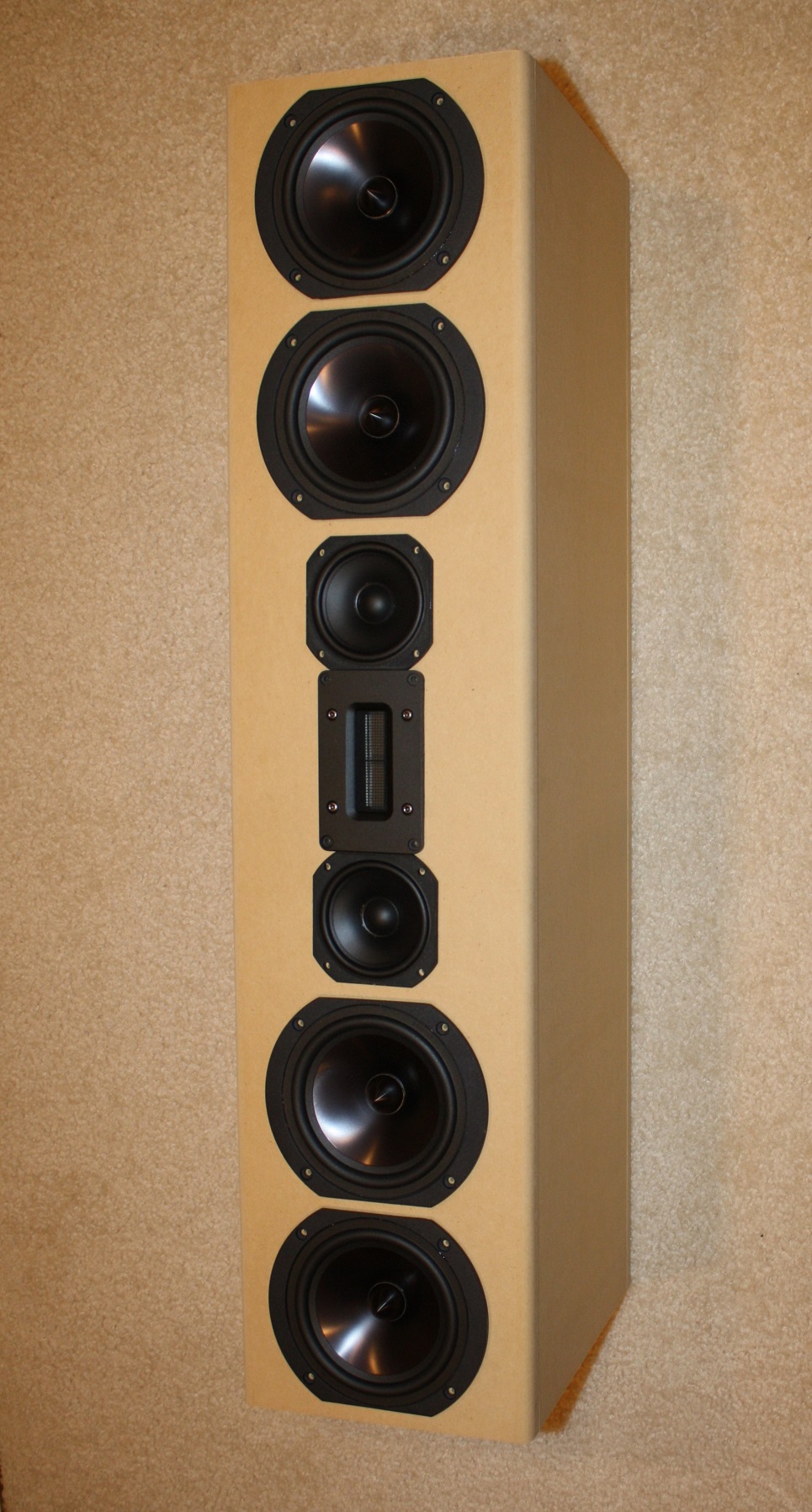
Skylark Flying Towers
Designer:
Ben B.
Project Category:
Tower Speakers
Project Level:
Intermediate
Project Time:
8-20 Hours
Project Cost:
$500 – $1,000
Project Description:
The Skylark Flying Towers are short nested line array speakers designed to utilize the Denovo Audio Knock-Down Tower Speaker Cabinet. It’s a 3-way design with a Fountek ribbon tweeter for the high frequency part of the array. The mid frequency portion consists of 2 full range drivers; 1 above and 1 below the tweeter. The low frequency portion consists of 4 woofers; 2 above and 2 below the mids. The speakers utilize a sealed alignment, as they are designed for augmentation with a subwoofer (or multiple subwoofers). Since the arrays are short and the listening position should be near the tweeter axis, the speakers need to be placed on a stand or otherwise elevated off the ground (thus they become “flying towers”). I consider this a 6 ohm design with 89-90 dB sensitivity, and full baffle step compensation. The speakers are very dynamic and were designed to achieve high output levels.
Design Goals:
The goal of this design is to make a nested array speaker that’s inexpensive and easy to build. In contrast with other types of arrays, this design is free of comb filtering, and requires no DSP delays, nor equalization. By following particular design rules relating driver placement, crossover frequencies, and crossover slopes, this design significantly reduces floor and ceiling reflections over a very wide bandwidth. In contrast, the horizontal dispersion is wide and lateral reflections are not attenuated. By maintaining lateral reflections but attenuating vertical reflections, the design seeks to optimize the trade-off between apparent sound-stage width and perceived detail.
Driver Selection:
The tweeter selected is the Fountek Neo X 2.0 (296-709). This tweeter has the appropriate height to maintain a similar vertical dispersion as the rest of the speaker, and can support the crossover frequency and slopes required. Also, ribbon tweeters are known for their detail and transient level, and this one does not disappoint.
The mid frequencies are covered by the Tymphany TC9FD18-08 (264-1062) full range drivers. A small full range is most appropriate here because the design calls for shallow crossover slopes for the mids. Also, the small size maintains good horizontal dispersion across the frequency range used. These drivers are smooth, with low distortion over the applicable frequency range, and very cost effective, too.
The woofers are the Dayton Audio RS150T-8 6″ Reference Woofer Truncated Frame (295-342). The truncated frame is required to fit all 7 of these speakers in a cabinet that’s only 34 inches tall. These woofers also have smooth frequency response and low distortion. They also maintain wide horizontal dispersion over the frequency range used in this design. Using 4 of them keeps the impedance high, while increasing the sensitivity, and gives the desired vertical dispersion.
Enclosure Design:
This design utilizes the Denovo Audio Knock-Down MDF 1.16 cu. ft. Tower Speaker Cabinet (300-7066). This is a very sturdy and precision cut cabinet that is easy to work with and represents a good value, particularly to those of us without great woodworking skill. There is an enclosure inside to isolate the mids from the woofers. The speakers are centered on the baffle horizontally. The tweeter is also centered on the baffle vertically. The mids are placed immediately above and below the tweeter, with no separation.
Measuring from the bottom of the speaker, the woofer center heights in inches are 3.0567, 8.5033, 25.497, and 30.943.
The mid center heights are 13.112 and 20.888 inches.
The tweeter is centered at 17 inches.
I made the mid enclosure out of 1/2 inch mdf. The enclosure is 12.25 inches tall and 6.25 inches wide (external). The internal depth is 3.5 inches. I cut 4 inches off of the center brace to account for the mid enclosure. I also had to cut 5″ out of the front part of the other 2 braces in order to fit around the woofer holes.
Enclosure Assembly:
Woodworking is not my area of expertise. I put the speaker together largely using liquid nails to attach the pieces and create seals. It’s probably good practice to avoid screwing into the end of the mdf pieces. Since all the drivers have faceplates of very similar thickness, flush mounting is optional but not required. I did not flush mount mine.
Crossover Design:
Since the design has goals for on axis and vertical off axis behavior, the target responses had to be followed closely. This required a somewhat complicated crossover, particularly for the tweeter. The crossover frequencies are 800 Hz and 3 kHz. Crossover pictures and measurements are included.
Tips & Tricks:
None.
Conclusion:
The design goals have been verified with measurements. The speaker is extremely detailed but easy to listen to (when augmented with a subwoofer). It’s very dynamic and plays loud and clean. There’s no comb filtering, and the response is very similar out to +/- 15 degrees from the vertical axis.
Since there is no DSP nor equalization required, this design makes for a great introduction to arrays that’s relatively simple and inexpensive. Anyone who’s been considering an array design but has been intimidated by the complexity or cost should consider these. Also, anyone interested in a speaker with wide horizontal but narrow vertical dispersion should consider this design.
About the Designer:
Ben Butterfield is an electrical engineer who designed his first speaker in college and used it in his senior design project. He was active in the DIY community in the early 2000s, but took a break after assessing his own designs as lacking innovation. An innovative idea for optimizing the response of multi-way nested line arrays rekindled his interest in DIY speaker building in 2016.
Project Parts List:
|
Part # |
Description |
Qty |
|
296-709 |
Fountek Neo X 2.0 Ribbon Tweeter Black |
1 |
|
264-1062 |
Peerless by Tymphany TC9FD18-08 3-1/2″ Full Range Paper Cone Woofer |
1 |
|
295-342 |
Dayton Audio RS150T-8 6″ Reference Woofer Truncated Frame |
1 |
|
300-7066 |
Denovo Audio Knock-Down MDF 1.16 cu. ft. Tower Speaker Cabinet |
1 |

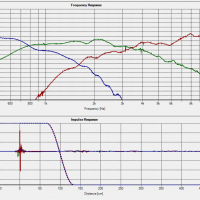
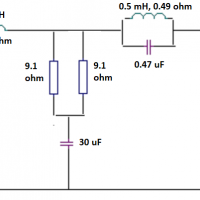
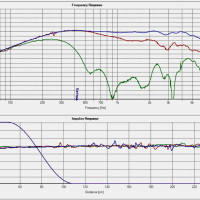
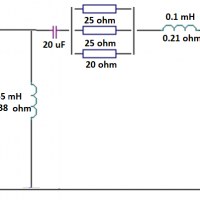
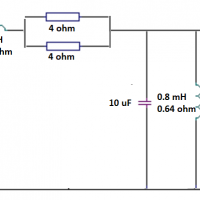
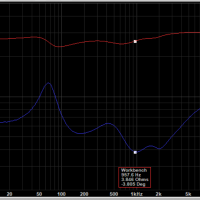
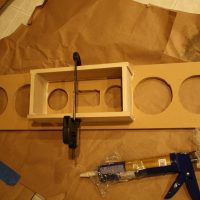
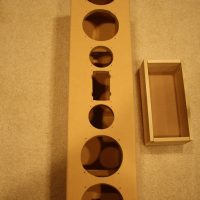
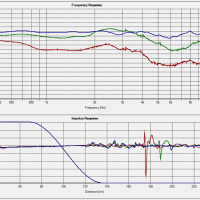
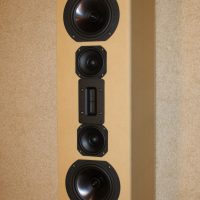
Good job. Does it sound sibilant with the 15K hump?
Sibilance is attributed to frequencies from about 5 kHz to 10 kHz. 15 kHz is barely perceptible, with very little content up there, and variations of a couple of dB in that range don’t make much difference in my experience. To my ears, they don’t sound sibilant at all.
Very nice build. I am pretty new to speaker design and was curious about what you did to eliminate comb filtering. For the mids with crossover at 3KHz, the wavelength is about 4.5″, mid center spacing is about 8.5″. So they are 2 lamba separated, which should lead to some comb filtering, right? Is it the shallow crossover slopes that come to the rescue?
The mid separation is closer to 7.75 inches, but the reason there isn’t comb filtering is because the tweeter is also contributing 50% of the output at the crossover frequency, while each mid is contributing 25%. It’s like a little shaded array (0.25 0.5 0.25) at that frequency, and shading is used in DSP to widen main lobe widths, and reduce sidelobes. The mainlobe is about 35 degrees wide, which creates a similar response across a wide range of heights at listening distance (these aren’t meant for nearfield listening). Additionally, the sidelobes that do exist at extreme angles never come up to full power. The response is just nothing like a comb.
The look great! I wanted something similar to the Uluwatu towers but really wanted a found two neo tweeter. So now I considering building these but wanted to check and see if you were still around to answer questions if I got stuck?